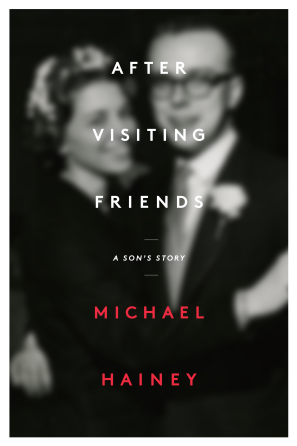Print Edition: April 10, 2013
 Michael Hainey’s father is dead.
Michael Hainey’s father is dead.
It’s quick. An aneurism, the doctors say. Open and shut case.
Hainey, our author and protagonist, is six at the time. Skip ahead 35 years, and he’s become a journalist like his father.
Three decades may have passed, but his curiosity still bothers him – so Hainey begins looking into his father’s death.
The facts don’t add up.
Records are unclear about where, exactly, his father died. One obituary says he died on the street, and another “after visiting friends.” But who were these friends? Was it murder? Was his father having an affair? And who’s covering it up – whatever “it” is?
Our protagonist is resolute, unstoppable; he dives 30 years in the past without a backward glance, climbing his own family tree in a search for details. It is a son’s search for a father combined with a newspaperman’s need to fill holes.
There is no live action, and the stakes should be fairly low – the father, after all, has been dead for over 30 years. Somehow there is still an urgency to the quest, a unyielding purpose that drives Hainey and the story forward.
Stylistically, the book reads like a newspaper feature; short phrases and sentence fragments populate the chapters. It’s a newspaperman’s sense of how to convey the facts—briefly, and quickly—applied to an emotional journey. The resulting language is concise and beautiful – stark, simple, and emotive.
Hainey is cautioned by several of his father’s friends to explore the layers beneath any facts he digs up. After all, the fog of memory paired with industry-wide alcoholism provides a rose-tinted recollection at best – and few will be willing to remember things as they really were. The reader tags along as Hainey grapples with a cold trail and veiled descriptions. Newspapermen stick together, and none of his father’s friends are willing to spill the beans.
At the core of the book lies the contrast between the black and white facts of historical record and the colourful narratives of Hainey’s day-to-day interactions with the living. He may be looking for his father, but Hainey also finds himself drawing closer to his family of the present – cousins, nephews, divorced aunts and the adopted family of his father’s graduating class.
The search for an unknown dead father, ironically, results in a strengthened relationship with his mother. Their interactions are quiet, minimalist and often place-based. She takes him to the cemetery, the old sandwich shop, the lunch spots his parents used to frequent in their youth. These innocuous daytrips frame the story, grounding Hainey in the scenes where his parents fell in love, setting the scene for his father’s death and posing even more questions. How much does his mother know? And what kind of man was his father?
He finds the truth behind the title phrase “after visiting friends,” and this would be an easy place to end the story. We have the truth, after all – what else do we need?
But this is real life, after all, and Hainey has to decide what to do with the facts now that he has them. Should he tell his family what he’s discovered? Does his mother know the truth, or will he break her heart by telling her what really happened?
These are the simple questions, but there are large ones standing behind them; what power does the truth truly have? Will this death continue to define the Hainey family, or is it possible to move on from tragedy – no matter the circumstances?
On the last page of the book, Hainey recognizes what the reader has seen from the periphery all along. It doesn’t matter.
“Here I am,” he says, suddenly struck with the revelation. “A son who went looking for his father, and found his mother.”
It’s a wonderful story, exploring the interesting parts of the past and the immediacy of the present. Where some leaps in timeline can leave a reader confused, Hainey ties the book together naturally and skillfully, treating the reader as a friend and confidante, recording the sort of confessions that happen late at night when everyone else ought to be asleep. It isn’t a book so much as a conversation, and when you close the cover with a sigh it’s more like hanging the telephone back on the hook. For a minute you, too, were part of the Hainey family – and the closure is both intimate and personal.

